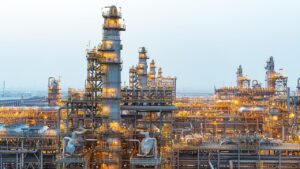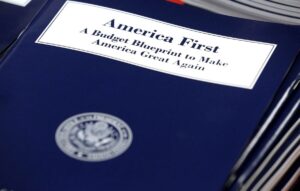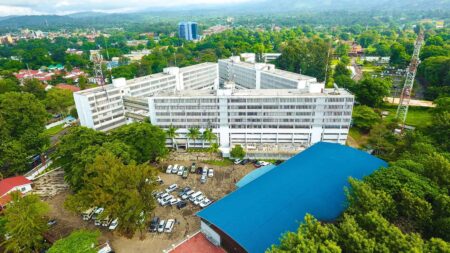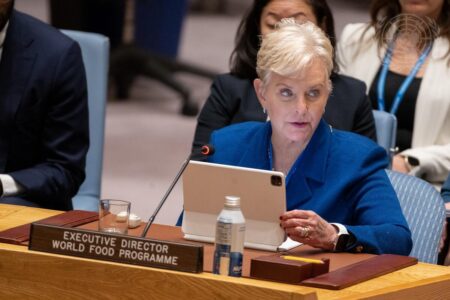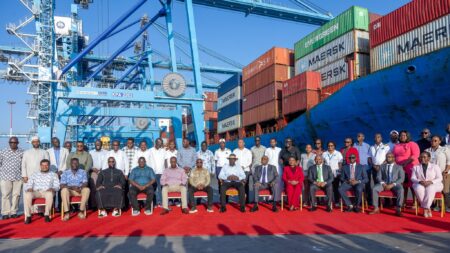Every month, Kenya’s Standard Gauge Railway moves an average of 200 cargo trains from the coastal city of Mombasa to Nairobi’s inland container depot. With it, it moves at least 1,000 containers to Nairobi. This has left a bitter taste among residents of Mombasa, who have over the years depended on the undertakings around the port for jobs.
SGR, which has been billed as the biggest transport infrastructure project in the Kenya’s history, is expected to haul about nine million tonnes of cargo to make a profit of Sh5.08 billion a year, averaging Sh424 million per month, compared with 990,488 tonnes carried in the first year when SGR made a loss of Sh10 billion.
The SGR has so far made Sh10.9 billion from cargo and passenger business since it started operating, according to the Kenya National Bureau of Statistics’ economic indicators report released in December 2018.
The cracks on the local economy are starting to be seen. First, there has been an almost daily protest from drivers and Container Freight Stations (CFSs) operators lamenting how the hauling of cargo to Nairobi has affected their lives and business. There have been clear and sometimes simple indicators like an increase in joblessness as well as an increase in the number of rent defaulters within the city.
This seems to have been backed by a recent report released by the University of Nairobi which showed how the economy of Mombasa, which mainly depend on tourism and port business has been crippled by both underperformance of the tourism industry as well as the collapse of the port business.
The study by the University of Nairobi also revealed that more than 60 percent of employees working at the CFSs were sacked since a government order for a total movement of cargo on SGR. The report says the government in the process has lost Sh126 billion in revenue in one year from Mombasa County since the introduction of freight trains.
Read also: Standard Gauge Railway (SGR) will not kill road transport
The study noted that the coastal county is at “economic decay point”, with CFSs, long-distance trucks and transport-related businesses such as fuelling and service stations mostly affected noting that the SGR project has more negative effects on the economy of coastal people than good.
But when did the rain start beating Mombasa? First of all, Kenya’s government under the leadership of President Uhuru Kenyatta initiated one of the most ambitious and hyped projects to use the railway to connect coastal city and Nairobi and eventually open the entire East African region as well as South Sudan. The initial plan was to involve Uganda, Rwanda, South Sudan and probably Eastern Congo. However, more and more countries have pulled out of this project leaving it solely being handled by Kenya.
This has left Kenya’s government with the only option to have the railway reach Uganda’s border point. The Mombasa-Nairobi phase cost Sh327 billion, the extension to Naivasha costs Sh150 billion and the final phase will cost Sh380 billion. There will be an establishment of special economic zone (SEZ) in the Mai Mahiu/Suswa region that will be key component of this modern railway project.
However, it is the effects of the Nairobi’s Inland Container depot that has left the Coastal town on its knees. In August, the Ministry of Transport issued a directive to have all cargo imported to the Mombasa port transported by rail to Nairobi. This did not last long as an announcement of the suspension of the earlier order was made barely days to its commencement.
There has been pressure from the government to increase more trade through the SGR to enable offset a high debt accrued from the financiers of the railway, and the Chinese operators. Kenya signed a deal for a $3.233 billion loan (Sh324.01 billion) from China’s Exim Bank, comprised of $1.633 billion commercial loans and $1.6 billion concessional one to build a 385km modern railway between Mombasa and Nairobi.
The passenger segment of the SGR has overly been successful and the government has been pushing for the cargo section to move more cargo to Nairobi even as it awaits the completion of the Nairobi- Naivasha section and the eventual construction of the Naivasha Malaba section.
